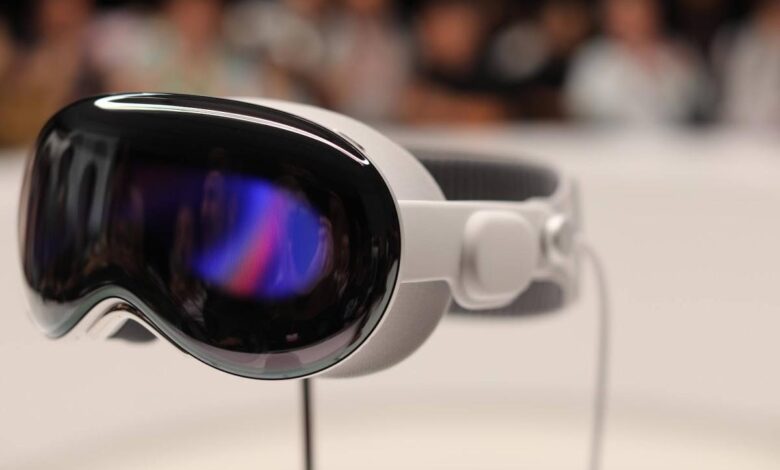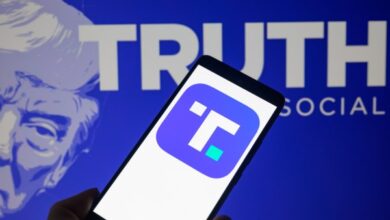Over half of Imaginative and prescient Professional-only apps are paid downloads, way over wider App Retailer

[ad_1]
Apple’s Imaginative and prescient Professional affords customers a brand new method to work together with apps by way of spatial computing, but it surely additionally affords app builders a method to generate income with out subscriptions. In keeping with a not too long ago launched report from app intelligence agency Appfigures, over half of Imaginative and prescient Professional-only apps (52%) are paid downloads — a shocking proportion provided that throughout the broader App Retailer, solely 5% of apps monetize this manner.
Along with the massive group of paid downloads, 35% of Imaginative and prescient-only apps didn’t monetize via the App Retailer, and 13% provided subscriptions.
The evaluation examined all of the apps optimized for the Imaginative and prescient Professional, together with the greater than 700 apps optimized for the brand new gadget, that means these apps which can be Imaginative and prescient Professional-only and others the place the developer optimized an present app to work on Apple’s VR/AR headset particularly. Nevertheless, it didn’t embrace the roughly 1.2 million iOS apps that work on the Imaginative and prescient Professional, however weren’t modified by their builders.
Together with iOS apps that had been modified to incorporate a local Imaginative and prescient expertise, solely 17% had been paid downloads, and 58% had been monetized with subscriptions.
Appfigures tells Information World an additional evaluation of all apps made for the Vison Professional signifies the apps have a median worth of $5.67, with the highest price at $98 (for an interactive periodic desk of parts). Most apps are priced at $9.99 or beneath. And for those who purchased all of the paid apps, it could value you $1,089.07 — which remains to be lower than the price of the gadget itself, which begins at $3,499.
The takeaway right here is that app builders who’re embracing the Imaginative and prescient Professional with distinctive, native experiences constructed only for Apple’s AR/VR platform are returning to the paid obtain monetization mannequin. That would have invited extra alternatives for discovery as effectively, however sadly, Apple has now simply eliminated all Imaginative and prescient Professional apps from the highest charts on the App Retailer. That may make it tougher to trace builders’ success and for customers to find new apps because the Imaginative and prescient Professional’s App Retailer has no classes or top charts, as on different platforms.
Famous one Imaginative and prescient Professional developer, Michael Sayman, his Information Ticker app for the brand new gadget shortly grew to become the No. 3 app amongst all paid information apps for iPhone and Imaginative and prescient Professional in a matter of days, after which grew to become No. 1 within the Information class.
“The window of alternative right here is nuts,” he informed Information World shortly after the app’s launch, including that the app has since seen 1000’s of downloads. However with Apple’s removing of Imaginative and prescient Professional apps from the Prime Charts, Sayman says he’ll only return to Vision Pro improvement after Apple fixes search and provides extra discovery choices.
In the meantime, Juno, a Imaginative and prescient-only YouTube consumer for the Imaginative and prescient Professional from Apollo developer Christian Selig additionally broke into the highest 10 within the Picture & Video class shortly after the gadget’s launch.
Remarked Selig on X, “Juno has formally paid for the value of my Imaginative and prescient Professional, who stated creating early on this platform wouldn’t be price it?”
A return to paid apps may enchantment to builders who desire a new method to monetize with out gouging clients with high-priced subscriptions.
Through the years, Apple pushed app developers to undertake monetization fashions involving free apps with in-app purchases and subscriptions as these fashions straight benefitted Apple, because of the 15% to 30% fee it takes on in-app gross sales. The shift was a part of Apple’s broader technique to develop into a services-driven enterprise. That’s, as an alternative of merely encouraging customers to purchase new iPhones and Macs and different Apple gadgets, the corporate additionally wished to generate ongoing income from these gadgets via companies like AppleCare, Apple TV+, Apple Music, Apple Arcade, iCloud, Apple Information+, Apple Health+, promoting, and, in fact, App Retailer purchases, amongst different issues.
These ongoing income streams assist Apple climate altering market circumstances round iPhone gross sales — just like the 13% decline in gross sales in China the corporate reported within the first quarter, for instance. Concurrently iPhone gross sales in that key market dropped, Apple’s companies division grew 11% from the prior quarter to succeed in $23.11 billion.
Nevertheless, for customers, the expansion of subscriptions has been a combined bag.
It’s meant that even easier apps now demand ongoing funds and beforehand free, ad-supported apps now cost. Plus, the subscription market opened the door to scammers who reap the benefits of the benefit of in-app purchases to trick customers into shopping for subscriptions by utilizing complicated consumer interface designs and the guarantees of free trials which convert to paid after mere days, amongst different deceptive ways. The App Retailer quickly full of complaints about sneaky and overpriced subscriptions.
Given there appears to be a chance for builders to generate income via one-time purchases on the Imaginative and prescient Professional, it’s odd that Apple would have pulled these apps from its Prime Charts, the place they might have discovered new clients. How that may affect developer curiosity within the income mannequin and gadget itself nonetheless stays to be seen.
[ad_2]
Source link




